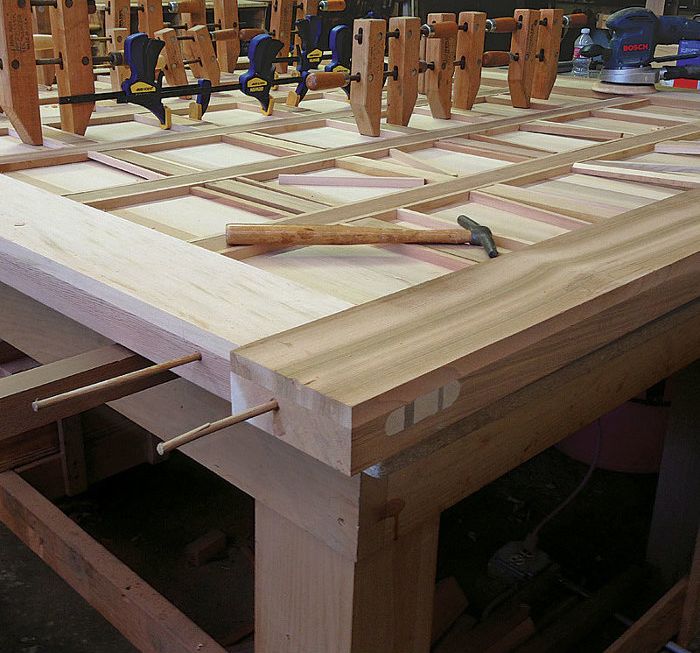The Art and Science of Building Garden Gates
A father and son share their secrets to crafting beautiful and long-lasting custom gates: proper wood, proven joinery, and durable hardware.

Synopsis: The father-and-son team Charles and Ben Prowell explain that the long-term success of any wood assembly that’s fully exposed to the weather—especially a garden gate that must remain operable—requires sourcing the proper species and grade of wood as well as employing a flexible system of joints that, while satisfying the structural integrity of the work, will also accommodate the maddening variable of dimensional change. This article includes a discussion of their experience with wood selection, wood movement, hardware, and adhesives; an insightful sidebar on why certain species that may seem appropriate are best avoided; and a detailed illustration of the joinery techniques employed in one of their classic Craftsman-style gates.
The long-term success of any wood assembly that’s fully exposed to the weather—especially a garden gate that must remain operable—is dependent upon sourcing the proper species and grade of wood as well as employing joinery that, while satisfying the structural integrity of the work, will also accommodate that maddening variable of dimensional change.
Wood, like all living matter, is drawn from a genetic pool that defines one species from another, each bearing unique characteristics that make it favorable for specific uses. Hardwoods such as cherry, maple, oak, and walnut are ideal for fine furniture. Douglas fir—exceptional for its density, capacity for stress loads, and affordable price—is a default for most structural framing. Hillerich & Bradsby in Louisville, Ky., has learned over five generations to appreciate the properties of white ash for its Louisville Slugger baseball bats, and since the 1850s, Steinway & Sons has relied on the properties of Sitka spruce and hard maple for its pianos. Species with inherent chemical tannins that resist the infestation of bacteria and insects are vital for the products we make, regardless of whether they will be installed in bone-chilling Minnesota, the temperate climates of the pacific Coast, or the humid smorgasbord of Florida.
Because our gates in particular are meant to remain in service for the long haul and can account for a sizable investment by homeowners, their greatest vulnerability should be the unlikely event of a collision with a wayward asteroid and not a failure of construction or a substandard wood choice.
Good wood
With its life span of several thousand years, the coastal redwood would seem to be the ideal species to use in gate construction. It’s practically indestructible—thanks to its peculiar repellent tannins—to the point where its only real enemy is the chainsaw. But not all redwood is the same. The redwood used by Charles and other craftsmen in this region during the 1960s and ’70s was all salvaged from the first- and second- growth trees that had been used to build San Francisco and that were milled within a 20-mile radius of the city (most of which were lost in the fire following the 1906 earthquake). However, the redwood found in today’s market has been harvested on a 30-year, commercial-growth cycle. For a species that doesn’t mature until its trees are 150 years old, the tannins that account for its exalted status are not fully developed as a decay-resistant property. One look at the end grain of a redwood 2×6 in the local lumberyard reveals only four to six growth rings per inch, which limits the board’s long-term dimensional stability. This means that it’s inappropriate for the gates we make.
This article originally appeared in Fine Homebuilding magazine as “Golden State Gatemakers”
For more photos and details on garden gates that last, click the View PDF button below.

























